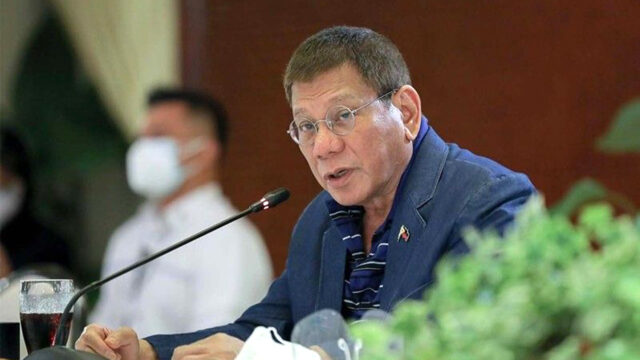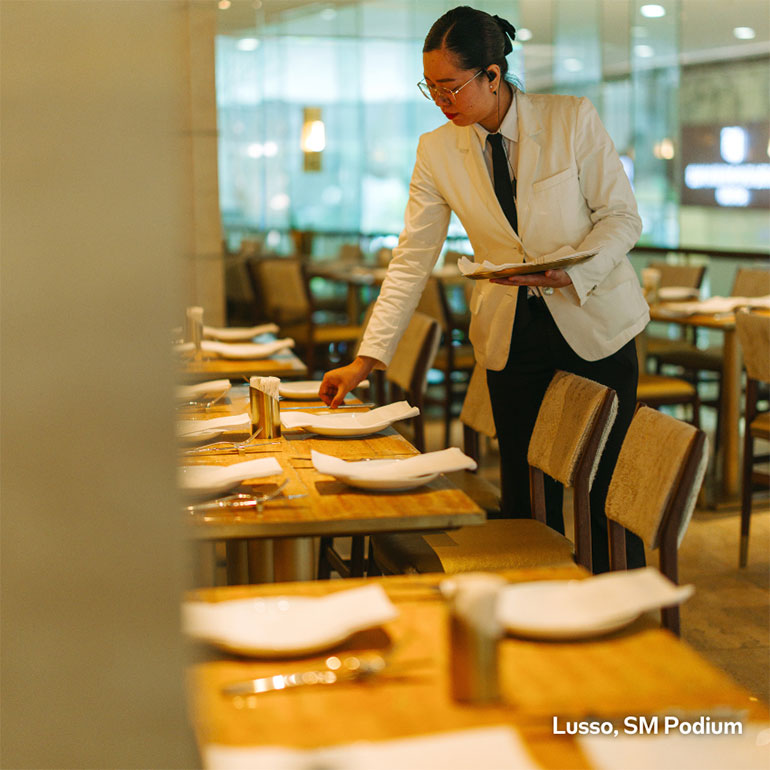The Bangko Sentral ng Pilipinas (BSP) lifted the moratorium on new digital banking licenses this year, allowing 10 digital banks to operate in the country. This means that it will grant four available slots for new and existing players if it meets the BSP’s requirements.
This aligned with the central bank’s goal to harness the potential of these banks in bringing positive impact to the financial system while remaining considerate to possible risks.
“New digital bank applicants will be subjected to a rigorous licensing process that will look into their value proposition, business models, and resources capabilities,” the BSP said in a statement.
It reiterated that this follows the standard licensing criteria which includes the assessment of the banks’ ownership and control structure, suitability of shareholders, fitness and propriety of directors and senior management, adequacy of capital, as well as banks’ strategic and operating plan, including an appropriate system of corporate governance and risk management.
The BSP said in an e-mail that its digitalization agenda includes not only traditional banks but also rural banks.
Given this, the agenda will encourage customers to better serve them by making services accessible online on the back of their brick-and-mortar banking operations.
Thanks to BSP’s Rural Bank Strengthening Program (RBSP), coupled with the initiatives of rural banks’ themselves, the rural banking system in the country remains strong and stable, Rural Bankers Association of the Philippines (RBAP) Executive Director Rafael Francisco D. Amparo said in an e-mail.
Launched in 2022 by the central bank, the RBSP is a structured program which aims to strengthen the rural banking landscape to provide better services to rural areas.
Among those expected to apply for digital bank licenses are financial technology (fintech) companies that entered the market through rural banks.
Previously, several rural banks have been used as an entry point for foreign fintech companies to establish digicentric financial institutions.
Among these are Singaporean-based consumer internet company Sea Ltd. and Streetcorner Group, an association between Indonesia-based fintech company Akulaku and nonlife insurer Metropolitan Insurance Co., Inc.
Sea, which owns the e-commerce platform Shopee, acquired Banco Laguna, Inc. in 2020 and later on launched its digital banking app SeaBank in June 2022.
On the other hand, Streetcorner Group started the digital transformation of Rural Bank of Cavite City, Inc. and launched OwnBank in June 2022.
“We believe that these rural banks that transitioned to digital banks were always meant to be digital banks in the first place,” RBAP’s Mr. Amparo said.
He emphasized that these banks’ foreign fintech shareholders recognized the appropriateness of acquiring rural banks as an entry strategy and then developing digital capabilities until reaching maturity as a digital bank.
He said that digitalization provided rural bank clients fast and convenient services to rural bank clients and noted that utmost care should be observed to manage the vulnerabilities that digitalization inadvertently opens.
BE COMPLIANT
The central bank recognizes this value, and the contribution foreign investors bring in to drive growth in the financial system.
However, it still stands its ground: rural banks operating as digital banks should comply with regulatory requirements and upgrade their licenses.
“No bank should be operating as a digital bank using a rural banking license unless they convert their license to a digital banking license,” the BSP said in an e-mail.
“Some of these investors have bought a few rural banks to convert them into digital banking platforms. While new investment is a positive development, it requires careful assessment due to potential regulatory and financial risks,” the BSP said.
“While we do not see material risk at this point, we don’t want digital banks created via the ‘backdoor,’ or operating under rural banking regulations,” it added.
“If a rural bank is acting like a digital bank, then it should comply with the appropriate capital and other regulatory requirements for a digital bank,” the central bank said.
The BSP also emphasized that foreign entities must understand the local financial landscape to manage risks effectively.
The new technology, it said, would help rural banks become more resilient, improve operations, and enable them to offer better financial products and services to their original market through more distribution channels.
It is a good move that rural banks are shifting towards digitalization, however, adherence to regulatory compliances should be considered.
There are possible risks if they fail to meet the requirements set by the central bank.
According to the BSP, rural bank turned digital banks will face higher capital and prudential requirements but will be given a transition period to comply and the central bank will closely monitor its progress and ensure timely regulatory interventions.
The BSP said that complying with the higher capital requirements and specific regulations are among the main measures rural banks should adhere to.
Rural banks-turned-digital banks must maintain a minimum capital of P1 billion, under the BSP Circular No.1154.
Additionally, the BSP will apply targeted supervisory actions to thrift, rural, and cooperative banks converting to digital banks or digitalizing their operations, setting key indicators to assess their digital operations.
These measures will include regulatory requirements on capitalization, prudential ratios, and governance.
“Ultimately, these digital banks will be supervised based on their risk profile and activities,” the central bank said.
NEOBANKS
Aside from digital banks, another nontraditional financial entity has been gobbling up rural banks — the neobanks.
Neobanks are a digital-only financial intermediaries that operates through applications and websites but still offer services and operations similar to banks (or in this case, rural banks).
RBAP’s Mr. Amparo earlier said that neobanks are the “way forward” for the rural banks.
Netbank (A Rural Bank), Inc., (Netbank), formerly Community Rural Bank of Romblon (Romblon), Inc., is operating as a neobank but with rural banking license.
Founded in 2019 by Gus Poston and David Paulo Dela Paz, it was the first banking-as-a-service platform in the country, which aims to help other fintech companies offer financial products.
“[Netbank] does not hold a digital bank license but operates as a fully digital-focused financial institution, categorized as a neobank,” Netbank Executive Director and Head of Branch operations Alexandra Q. De Chavez said in an e-mail.
“The Bank plans to retain its rural banking license, utilizing its existing regulatory compliance and service offerings through the previously secured EPFS (Electronic Payment and Financial Services) and EMI (Electronic Money Issuer) licenses,” Ms. De Chavez said.
Salmon, also known as the Rural Bank of Sta. Rosa Laguna, Inc., is another neobank operating under a rural bank license.
The neobank was founded by Pavel Fedorov, George Chesakov, and Raffy Montemayor and its services include buy now, pay later credit products, as well as high-interest rate deposits.
It bought 59.7% of the rural bank in 2024.
Salmon’s chairman, Raffy Montemayor, explained that they are not a digital bank but Salmon is “building a modern bank with branches, ATMs, and other types of physical presence and with customer interactions held offline, online, and everything in between.”
Mr. Montemayor added that Salmon plans to upgrade to a thrift bank license subject to BSP’s approval which will build its presence in the country through various channels and a capital base more than what most digital banks have.
“Unlike digital banks, we will combine physical branches with best-in-class technology solutions, ensuring access to customers both offline and online,” he said in an e-mail.
‘COOPETITION’
If rural banks will convert to digital banks, then it meant that it would face higher capital and prudential requirements. The BSP said that it will monitor these banks’ progress and ensure timely regulatory interventions.
“Rural banks should assess the financial, technological, and operational resources needed for digitalization,” BSP said.
This includes acquiring tech infrastructure and innovations like cloud-based core banking systems, cybersecurity, and fraud management tools.
The central bank also added that management and staff should build the technical expertise necessary for successful digital transformation.
“Digitalization creates unique challenges for the entire financial system,” RBAP’s Mr. Amparo said. “We are confident that the rural banking industry and the entire banking industry for that matter can turn these threats into opportunities for cooperation and collaboration.”
For its part, the central bank sees digital banks as key drivers of financial inclusion contributing innovative financial solutions.
“With the rise of digital-focused rural banks, the BSP anticipates a ‘coopetition’ dynamic among these institutions, benefiting all stakeholders,” the central bank said. — AMPY with KHH













 Lusso is the perfect setting for creating unforgettable memories. Whether you’re planning an intimate dinner with someone special, hosting a cozy family gathering, or celebrating milestones with your closest friends, the restaurant offers the perfect backdrop to celebrate the season in style.
Lusso is the perfect setting for creating unforgettable memories. Whether you’re planning an intimate dinner with someone special, hosting a cozy family gathering, or celebrating milestones with your closest friends, the restaurant offers the perfect backdrop to celebrate the season in style. Lusso is a natural inclusion in SM Podium, seamlessly aligning with its reputation as a haven for elevated experiences through its curated offerings, sophisticated ambiance, and dedication to world-class dining. Offering an exquisite menu designed to indulge the senses, the restaurant is an invitation to savor life’s finer moments.
Lusso is a natural inclusion in SM Podium, seamlessly aligning with its reputation as a haven for elevated experiences through its curated offerings, sophisticated ambiance, and dedication to world-class dining. Offering an exquisite menu designed to indulge the senses, the restaurant is an invitation to savor life’s finer moments.


 Visit Lusso at SM Podium and make this festive season truly special. Whether you’re indulging in a celebratory feast or treating yourself to an unforgettable dining experience, Lusso offers more than just a meal — it’s a taste of refined luxury. Discover more reasons to celebrate, more moments to savor, and more for you at SM, where exceptional dining meets the spirit of togetherness.
Visit Lusso at SM Podium and make this festive season truly special. Whether you’re indulging in a celebratory feast or treating yourself to an unforgettable dining experience, Lusso offers more than just a meal — it’s a taste of refined luxury. Discover more reasons to celebrate, more moments to savor, and more for you at SM, where exceptional dining meets the spirit of togetherness.